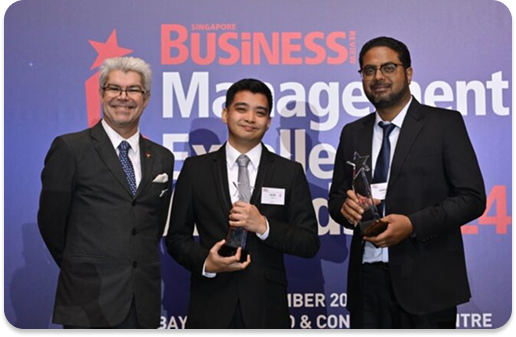Companies always look for ways to save money while improving efficiency especially in today’s global inflation. One popular strategy is customer service outsourcing through a call center.
However, many business owners wonder how much it costs to outsource customer service. This guide will walk you through the estimated costs and show you how businesses can get the most out of the service.
Table of Contents
Cost Breakdown: How Much Does Outsource Customer Service Cost?

Understanding the cost structure of outsourcing customer service allows companies to make well-informed choices which can lead to significant cost savings by reducing operational expenses like labor and infrastructure.
1. Per Hour Pricing
In the per-hour model, businesses are charged based on the hours customer service agents work. This straightforward model is ideal for companies with predictable service demands.
The hourly rate can depend on the level of expertise required for the job. The outsourced customer service cost varies based on factors such as location, language requirements, and the level of expertise needed.
- Essential Support: For basic customer service tasks such as answering general inquiries or handling simple issues, companies can charge an hourly rate. Hourly rates are suitable for businesses that need consistent but straightforward support.
- Specialized Technical Support: A company can charge per hour for more complex tasks that require specialized knowledge, such as technical support or handling industry-specific queries ensuring that businesses get high-quality support.
2. Per Interaction Pricing

In this model, companies are billed for each customer interaction, such as a call, email, or chat. This pricing model is fit for companies that experience varying levels of customer interactions, allowing them to pay for precisely what they use.
- Email Support: Companies may offer per-interaction pricing per email sent. This is ideal for businesses that receive a moderate volume of email inquiries and want to manage costs effectively.
- Chat Support: The cost for chat interactions is measured per chat. This option benefits companies that engage with customers through live chat on their websites or social media platforms.
- Call Support: Call interactions are billed per call. This model is perfect for businesses that handle many customer calls and must ensure each interaction is dealt with professionally.
3. Monthly Subscription
Some service providers offer a fixed monthly fee for a set level of service. This model provides cost predictability and benefits businesses with steady customer service needs.
Monthly subscription plans typically include a predetermined number of interactions, with additional interactions billed at a discounted rate.
- Small Business Plan: Monthly subscription plans for small businesses include up to 500 monthly interactions, covering emails, chats, and calls. Additional interactions are billed at a discounted rate, ensuring businesses can efficiently manage customer service costs.
- Medium Business Plan: There are plans which include up to 1,200 interactions for medium-sized businesses. This plan is designed for companies with higher customer service needs but still want predictable monthly costs.
- Large Business Plan: Large enterprises can opt for monthly plans which include up to 3,000 interactions. This plan provides comprehensive support for businesses with extensive customer service requirements, ensuring high-quality service without unexpected costs.
Additional Considerations
- Scalability: Pricing models are designed to be scalable, allowing businesses to adjust their service levels based on seasonal demands or business growth. This flexibility ensures that companies can manage customer service costs effectively without sacrificing service quality.
- Customization: Whether a business requires specific industry knowledge, multilingual support, or 24/7 availability, outsourcing services tailors their services to provide the best value for the investment.
Understanding The Cost Structure Of Outsourcing Customer Service

When thinking about how much it costs to outsource customer service, it’s important to know that prices can vary. Several key factors affect these costs, and knowing them can help businesses manage their outsourcing strategies more effectively.
Understanding call center pricing is crucial, as it varies based on factors like availability, location, and company size.
1. Type Of Service
Different types of customer service come with different price tags. Basic services, such as answering calls and replying to emails, are generally cheaper. These services typically involve straightforward tasks that require minimal training or specialized knowledge.
However, more specialized services tend to be more expensive. For instance:
- Technical Support: Technical support requires agents with in-depth knowledge of specific products or technologies. These agents must be able to troubleshoot issues, guide customers through technical processes, and provide detailed assistance.
- Multilingual Customer Service: If your business serves a global market, you might need customer service agents who can speak multiple languages.
Hiring multilingual agents can be more costly because of their specialized skills and the added complexity of providing support in different languages.
Customer support companies offer a range of services, from basic to specialized, ensuring that clients can choose what best meets their needs and budget.
2. Location Of The Service Provider

Where the service provider is based makes a big difference in cost. Labour costs vary significantly across different regions, impacting the rates charged for outsourced services. Center outsourcing costs are also influenced by staffing levels, as the number of trained personnel can significantly affect service expenses.
Lower-Cost Regions: Countries like India and the Philippines are popular outsourcing destinations due to lower labor costs.
Businesses can save significantly by outsourcing to these regions while receiving high-quality service. For example, companies like Gear Inc use their presence in these countries to offer competitive rates without compromising service quality.
Higher-Cost Regions: On the other hand, outsourcing to providers based in the United States or Europe typically costs more because of higher labor costs. However, some businesses prefer these locations for cultural compatibility, time zone alignment, or specific industry expertise.
3. Level Of Expertise
The skill level of the customer service agents also affects the cost—agents with special skills or industry-specific knowledge command higher rates.
- Essential Support: Agents providing basic support services, such as answering general inquiries or handling routine issues, are generally less expensive.
- Specialized Support: Agents with specialized skills, such as technical expertise, industry-specific knowledge, or proficiency in certain software, are more costly. These agents undergo rigorous training to meet their clients’ specific needs.
Outsourcing companies ensure that its teams are well-trained and capable of providing the level of expertise required by each client, effectively balancing cost and quality.
4. Service Hours

Customer service availability—whether 24/7, during business hours, or on-demand—impacts pricing—the more extensive the coverage, the higher the cost.
- Business Hours Support: Costs are typically lower if your customer service operates only during regular business hours. This setup requires fewer agents and does not involve shift work.
- 24/7 Support: Round-the-clock support incurs higher costs due to the need for shift work and additional staff to cover all hours. This level of service is crucial for businesses that operate in multiple time zones or offer critical services that require constant availability.
A reliable company offers flexible service hours, allowing clients to choose the level of availability that best fits their operational needs and budget.
5. Volume Of Interactions
The cost is influenced by the number of customer interactions (calls, emails, chats). Providers often offer tiered pricing based on interaction volume, allowing businesses to scale their customer service support according to their needs.
Center pricing is essential to understand, as different pricing models, including hourly rates, can help businesses make informed decisions based on their specific needs and circumstances.
- Low Volume: Businesses with fewer customer interactions might benefit from a per-interaction pricing model, where customers pay only for the services used.
- High Volume: Companies with a high volume of customer interactions might opt for a fixed monthly fee that covers a set number of interactions, providing cost predictability and potentially lowering the cost per interaction.
Customer support companies provide scalable solutions that adjust pricing based on the client’s customer service needs. This ensures that businesses only pay for what they use and can quickly scale up or down as needed.
Tips To Optimize The Cost Of Outsourcing Customer Service

Outsourcing customer service can be a budget-friendly approach, but it’s good to approach it thoughtfully to ensure you get the best value for your money. Here are some detailed tips to help businesses optimize their outsourcing costs:
1. Define Your Needs Clearly
Before you start looking for an outsourcing partner, take the time to outline your customer service requirements clearly. This includes:
- Types of Support Needed: Identify the specific types of customer service support you need, such as technical support, order processing, or general inquiries.
- Expected Volume of Interactions: Estimate the number of interactions you expect daily, weekly, and monthly. This will help you choose the right pricing model, whether per hour, per interaction, or a monthly subscription.
- Service Hours: Determine the hours during which you need customer service support. Do you need 24/7 coverage, or are regular business hours sufficient?
Understanding your needs clearly will help you select the most appropriate pricing model and service provider. It will also ensure that you only pay for the services you require.
Customer service providers play a crucial role in ensuring a consistent and high-quality customer experience by offering multichannel support and adhering to guidelines.
2. Take Advantage Of Technology

Technology can greatly enhance the quality of your customer service operations and reduce costs. Here are some ways to leverage technology:
- Customer Service Software: Implementing customer service software can streamline your operations. Features like ticketing systems, CRM integration, and analytics can help manage inquiries more efficiently.
- Automation Tools: Automation tools can handle routine inquiries, allowing human agents to handle issues upfront. For example, chatbots can respond instantly to common questions, while automated email responses can acknowledge receipt of inquiries and provide basic information.
- Self-Service Options: Self-service options, such as an FAQ section on your website, can reduce the volume of customer inquiries. By doing this, customers can find answers to their questions without contacting customer service.
3. Monitor And Evaluate Performance
Regular monitoring and evaluation can always help your company meet your quality standards. Here are some key metrics to track:
- Response Time: Measure how quickly your customer service team responds to inquiries. Fast response times can improve customer satisfaction.
- Resolution Rate: Track the percentage of inquiries resolved on the first contact. A high first-contact resolution rate indicates efficient and effective service.
- Customer Satisfaction: Collect customer feedback to gauge their satisfaction with the service they receive. Use surveys or follow-up emails to gather this information.
By regularly reviewing these metrics, you can identify areas to improve on and brainstorm with your outsourcing partner to address any issues. Additionally, consider the financial implications of using hourly pricing for a customer service representative and the overall cost-benefit analysis of various staffing models.
4. Negotiate Flexible Contracts
When negotiating contracts with service providers, make adjustments to accommodate changes in your business needs. Here are some aspects to consider:
- Scalability: Ensure the contract allows you to scale services up or down based on demand. Scaling is particularly important for businesses with seasonal fluctuations or those experiencing rapid growth.
- Trial Periods: Initially, negotiate a trial period or a short-term contract. This allows you to assess the service provider’s performance before committing to a long-term agreement.
- Service Level Agreements (SLAs): Clearly define the expected service levels in the contract, including response times, resolution rates, and other performance metrics. This ensures accountability and sets clear expectations.
5. Choose The Right Outsourcing Company

Choosing the right outsourcing company is the key for success in your customer service operations. Here are some factors to consider:
- Reputation and Track Record: Choose a partner with a legitimate track record and positive reviews from other clients. Look for case studies or client’s testimonials that backs up their ability to deliver high-quality service.
- Customization and Flexibility: Ensure the partner can customize their services to meet your needs. Gear Inc, for example, offers tailored solutions and transparent pricing, ensuring businesses get the best value for their investment.
- Cultural Fit: Make sure your company and the outsourcing provider fit your needs. A good cultural fit can enhance communication and collaboration, improving overall performance.
By following these tips, businesses can optimize the cost of outsourcing customer service while maintaining high standards of quality and efficiency.
GearInc’s tailored solutions and transparent pricing demonstrate how businesses can effectively manage the complexities of outsourcing, achieving significant savings and improved customer satisfaction.
Conclusion On How Much Does It Cost To Outsource Customer Service
Outsourcing customer service can be a good way to lessen expenses for businesses looking to improve their customer support capabilities. Maintaining an internal customer service team involves burdens of training, staffing, and management, which can be costly.
Outsourcing customer service can save costs and reduce management responsibilities by allowing dedicated agents to handle training and customer needs.
So, how much does it cost to outsource customer service? With careful planning and the right partner, it can be a worthwhile investment that drives business growth and customer satisfaction.
Discover how GearInc can help you streamline your customer service operations and reduce costs. Contact us today to learn more about our services and get a customized quote. Transform your customer service with GearInc!
Frequently Asked Questions On How Much Does It Cost To Outsource Customer Service
How Do Contract Terms Affect The Cost Of Outsourcing Customer Service?
Contract terms can influence the prices of outsourcing customer service. Long-term contracts may offer discounts compared to short-term agreements.
Additionally, contracts with flexible terms that allow scaling services up or down can help manage costs more effectively, especially for businesses with fluctuating demand.
Are There Any Hidden Fees When Outsourcing Customer Service?
While most reputable outsourcing providers offer transparent pricing, it’s essential to ask about potential hidden fees.
These could include setup fees, additional charges for peak times, fees for accessing advanced reporting tools, or penalties for exceeding agreed-upon interaction volumes. Understanding all potential costs upfront helps with accurate budgeting.
How Does Outsourcing Customer Service Impact Overall Business Costs?
Outsourcing customer service can save you a lot of money by reducing the need for in-house staff, training, and infrastructure.
It also allows businesses to convert fixed costs into variable costs, meaning you only pay for the services you use. These savings can be redirected to other business areas, potentially improving overall cost efficiency.
What Are The Cost Implications Of Integrating Outsourced Customer Service With Existing Systems?
Integrating outsourced customer service with your existing CRM or other business systems may incur additional costs. These include software licensing fees, integration setup charges, and ongoing maintenance expenses.
It’s important to discuss these integration costs with your outsourcing provider to get a comprehensive understanding of the total investment required.
How Do Different Communication Channels Affect Call Center Pricing?
The cost of customer service can vary depending on the communication channels used. For example, phone support might be more expensive than email or chat support due to the longer interaction times and the need for more extensive infrastructure.
Assessing the cost-effectiveness of each channel can help you choose the most appropriate and cost-efficient mix for your business.













